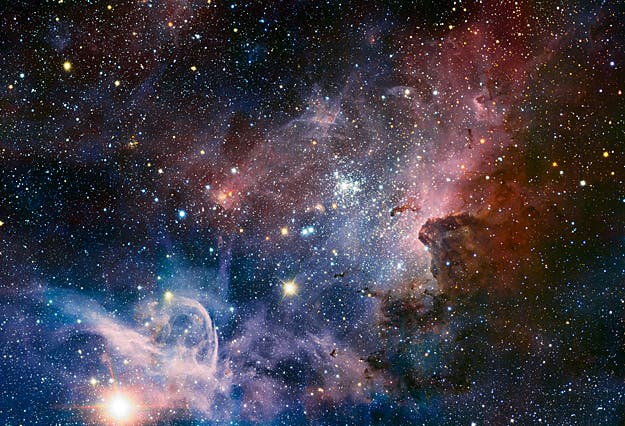This incredible photo of the Carina Nebuna, a massive star formation , was taken by the The European Southern Observatory’s Very Large Telescope (VLT), in the infrared spectrum. Even the astronomers from the ESO, who are privileged enough to witness some of the most amazing sights in the Universe, claim in a recent press release that this “one of the most dramatic images ever created by the VLT.”
The photo is in fact a mosaic of hundreds of smaller images, combined to form a giant, sublime picture. Because the photo was captured in infrared, a more accurate depiction of the formation, which contain some of the brightest stars know to astronomers, has been made, since most of its features don’t show in the visible spectrum. This is because cloud formation obstruct views, and infrared imaging can see right through these, but when it hits really dense gas and dust clouds that’s where it stops. This is why you can see some of the dark cloud formations in the photo captioned above, which couldn’t make the amateur star gazer more happier, adding even more beauty to an otherwise flawless “painting”.
The Carina Nebula is basically a stellar nursery, located deep in the heart of the Milky Way, 7500 light-years away from Earth, in the Carina (The Keel) constellation. A massive cloud of glowing gas and dust, the Carina Nebula is home to one of the most brightest and heaviest known stars to man, and makes for a perfect laboratory for astronomers studying the violent births and early lives of stars.
source










